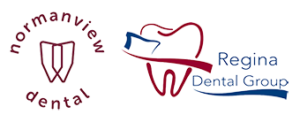What Causes Halitosis and How Can You Treat It?
When you’ve got bad breath, you might not realize it, as it’s difficult to actually smell your own breath. But when people start to drift away from you when speaking or breathing, it’s probably a good indication that you have halitosis (the medical term for bad breath), which is more normal than you may think.
Causes of Halitosis:
Most bad breath starts in your mouth and is usually caused by bacteria. There are many possible causes. They include:
- Food. The breakdown of food particles in and around your teeth can increase bacteria and cause a foul odor. Eating certain foods, such as onions, garlic and certain spices can also cause bad breath.
- Tobacco products. Smoking causes its own unpleasant mouth odour. Smokers are also more likely to have gum disease, another source of bad breath.
- Poor dental hygiene. If you don’t brush your teeth and tongue and floss daily, food particles remain in your mouth, causing bad breath.
- Dry mouth. Saliva helps cleanse your mouth, removing particles that cause bad odors. A condition called dry mouth or xerostomia naturally occurs during sleep, leading to “morning breath,” and gets worst if you sleep with your mouth open. Gum disease, mouth sores, infections and medications can also cause dry mouth.
- Other mouth, nose and throat conditions. Bad breath can occasionally stem from small stones that form in the tonsils and are covered with bacteria that produce odour. Infections or chronic inflammation in the nose, sinuses or throat, which can contribute to postnasal drip, can also cause bad breath.
- Other causes. Diseases (i.e. cancers, metabolic disorders, gastroesophageal reflux disease, etc.) can cause a distinctive breath odor as a result of chemicals they produce.
Treatment of Halitosis:
The best way to improve bad breath is to follow a thorough oral care routine including twice-daily tooth brushing and daily flossing to remove the food particles and bacteria from your teeth, tongue and gums. Keep in mind that mouthwashes only improve bad breath for the short term, and if you have a chronic problem, your dentist may suggest an antimicrobial rinse to help keep bacteria at bay.
How to Prevent Halitosis:
- Brush after you eat
- Floss at least once daily
- Make sure you clean right to the back of your tongue when brushing
- Clean dentures or oral appliances
- Avoid dry mouth
- Try to avoid foods with strong scents that linger, such as onions and garlic
- Chew sugar-free gum, especially when your mouth feels dry
- Eat fresh, fibrous vegetables such as carrots, celery and broccoli – they can help clean your teeth and prevent plaque from forming
It can be easy to keep your breath fresh! Practice good dental hygiene, and your mouth as well as the people around you will be thankful you did.
If you would like to learn more, please do not hesitate to give us a call or contact us to book an appointment.
